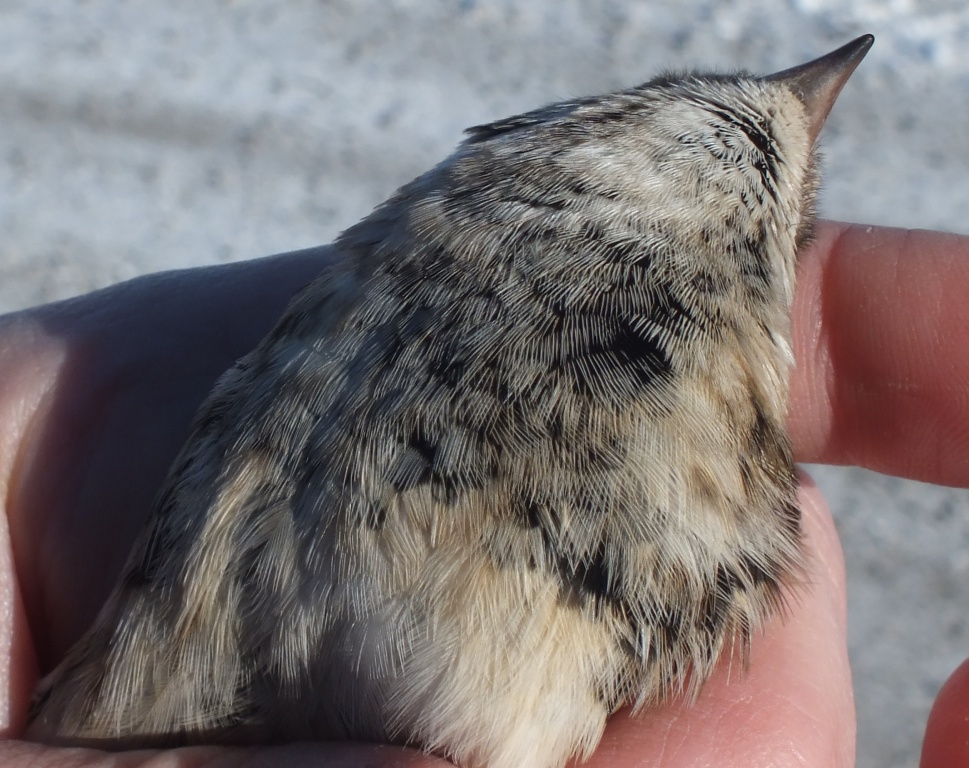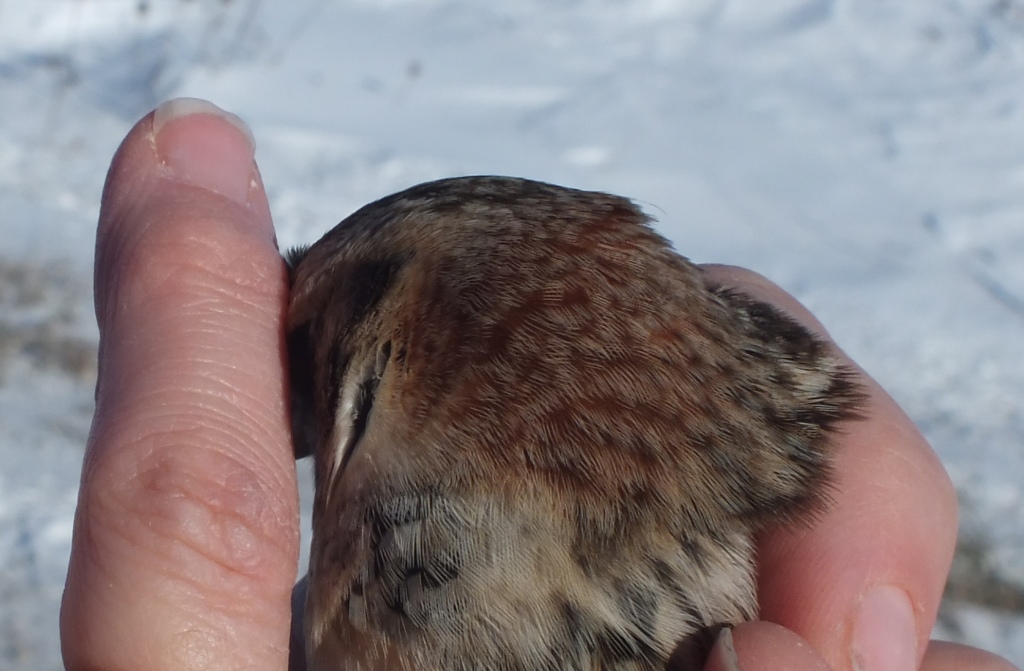Thomas Paine penned it many years ago and for a completely different context but…if the shoe fits….
“These are the times that try men’s souls”. What times are these you wonder?….why the early Snow Bunting times of course! We got a heavy snow fall (25 cm) a couple of days ago and the temperatures have been in the minus teens for close to a week. Snow Bunting conditions for sure. Nancy Furber has been baiting a couple of sites that have been succesful for us in the last two years. Yesterday, one of them was attracting a mixed flock of of about 125 Horned Larks, Snow Buntings and Lapland Longspurs. Great! But as I watched them I could already sense the frustration that was to come – they would swoop in to the site, scrabble about quickly, and then take off only to alight 100 meters away. Ten minutes later they’d repeat the same thing. This is what is so frustrating – what tries your soul as it were. At this point in the migration the birds seem to be very “jumpy” – ready to take off at the least threat, real or imagined (hmmm….do birds imagine?). Later in the year this isn’t the case nearly as much. Unless there’s a nearby predator, they fly in and go right to the baited traps. Is obtaining food more of an issue then? Are they currently carrying sufficient fat reserves that they can afford to be “picky”? I don’t know but I can say that it’s much easier to catch Snow Buntings later in the season than at the beginning of it. So, I’ll just have to wait….patiently. But it brings to mind the latter part of Paine’s quote: “What we obtain too cheap, we esteem too lightly; it is dearness only that gives everything its value”. Hmmmmm….I guess I should be happy that I’m not catching any Snow Buntings……I’ll value them more next month.
For the past two days (as I’ve said) Nancy has been baiting some sites. So, based on yesterday’s observations we decided to give it a go today. At site #1 there were 25 Horned Larks feeding away. They stopped and disappeared as soon as the traps were put out. Oh sure, they returned a couple of times but only to thumb their noses at the banders freezing in the Buntingmobile before taking off again. Site #2 had another 25 Horned Larks. These birds checked out the traps and fed around them but that was it. At one point a small flock of Snow Buntings (~8) flew by but paid no attention as they headed southwest.
But Lapland Longspurs have got it figured out. When the larks at site 2 flew up, low and behold there was a male Lapland Longspur in one of the traps. I hadn’t seen it arrive….but there it was. I’ve mentioned this in past posts: longspurs will get at the corn in the traps well before buntings have even a clue of how to go about it. Are their brains wired differently somehow so that figuring out a trap isn’t difficult. I would have thought that Snow Buntings, which nest in deep holes and tunnels in rock piles and scree fields, would have managed the trap tunnels easliy. But longspurs have them beat by a long shot. This is the first longspur of the season.

The beige tips to this male longspur’s throat/chest feathers will wear away resulting in the characteristic black neck of the breeding plumage.

Buffy tips of the neck feathers will also wear off producing the wonderful rusty nape of the breeding plumage.
I take great interest in the terms “by-catch” and “collateral damage”. Euphimisms, usually, to cover up gross mistakes or transgressions. By-catch can refer to all those albatrosses or sharks that get hauled in by long-liners fishing tuna; collateral damage passes over (and plays down) the human carnage when drones (owned by the “good guys) blow up innocents in the pursuit of “bad guys”. Pretty words covering up ugly acts. But yesterday we had a positive by-catch: while looking for Snow Buntings, in the midst of a snow storm, Nancy came upon a Snowy Owl studying the fields from a convenient post along a fence row (the owl that is). This would be one of the hundreds of Snowies that have “irrupted” from their Arctic breeding grounds. Irruptions occur when the food supply (usually lemmings) can’t sustain the population and the birds are forced south to find something to eat. It has been a huge southward movement this Winter with owls showing up throughout southern Canada and the northern U.S. – one even made it to Bermuda! I went back to look for it today (Duxbury Road and Town Line outside Hagersville) but couldn’t find it.
Rick



